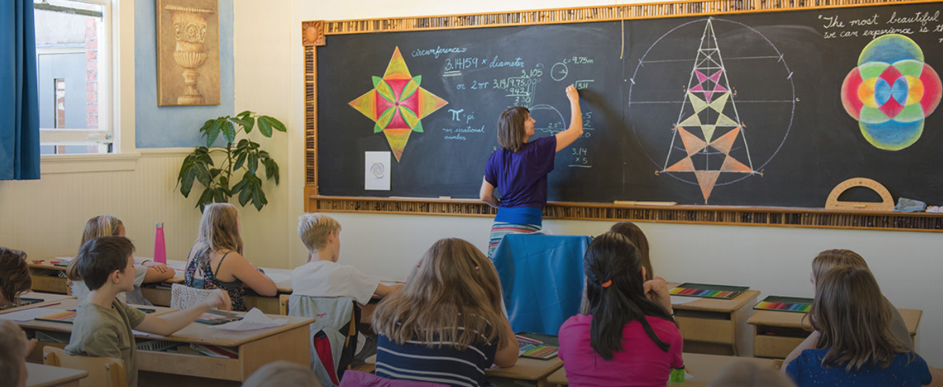
Waldorf Education
Waldorf Education is a worldwide independent school movement developed in Europe by the Austrian philosopher, social reformer and visionary Rudolf Steiner about 100 years ago. Today, Waldorf Education is represented worldwide in more than 60 countries with around 1000 schools and around 2000 early childhood programs. In Waldorf Education, the learning process is essentially threefold, dealing with the brain, heart and hands. Or in other words, thinking, feeling and doing. This is the basis at which Waldorf teachers work to raise and care for each child through a curriculum and methodology that combines academic knowledge, art and practical skills.

Although Waldorf Education has been in the United States since 1928 with the establishment of the Rudolf Steiner School in New York, it has not been well known in the country. However, Waldorf Education has become more well-known due to the growing dissatisfaction with non-formal education and the growing recognition of the many benefits that the child has gained through experiences through interaction with art, movement and nature.
Fundamentals of Waldorf Education
Waldorf Education begins with the assumption that childhood consists of three stages, each roughly seven years old. From birth to seven years (early childhood), seven to 14 years (mid-term childhood) and 14 to 21 years (adolescence). Each stage has an impact on how children feel and approach the world (intellectually, emotionally, physically and spiritually). This affects the way they learn. Waldorf educators believe that the curriculum and teaching methods developed for each childhood should be prepared in accordance with these stages of development.
Benefits of Waldorf Education
Children enjoy an unhurried childhood.
When you visit a Waldorf school and watch the students during the play, you will see children who enjoy living, are free to explore nature and go freely to places where wide curiosity and imagination take them. Waldorf-educated children are free to develop according to their natural rhythms and gain the experience to become healthy, self-fulfilling individuals by fully enjoying their childhood.
Learning is practical and age-appropriate.
In Waldorf classes you won't find young children wandering around a computer or having to sit for a standard test. Learning at Waldorf Education is an experiential activity. When it's time to teach the benefits, uses and how technology is made, Waldorf school teachers obviously do. However, the knowledge, self-awareness and problem-solving skills that children develop as a result of years of hands-on research allow them to learn more by sitting on a screen.
In-depth study enriches learning experiences.
The advantages of learning as a block in Waldorf Education have long been recognized. In the daily morning (or main ”) classes, Waldorf students spend up to two hours concentrating on a topic that rotates every 3-4 weeks between academic disciplines, from elementary to twelfth grade. Students have the opportunity to examine each topic comprehensively and from a range of perspectives that contribute to their enjoyment and understanding.
Waldorf schools grow versatile individuals.
In Waldorf education, all students learn mathematics, science and foreign languages. They all play an instrument and sing in the choir. They all learn crafts, take physical education classes and take part in classroom games. The aim of Waldorf Education is to expose children to a wide range of experiences and to develop many interests and abilities within them.
Waldorf-educated individuals have a passion for lifelong learning.
Education at a Waldorf school is not measured by competition and test scores and is seen as a lifetime journey.








